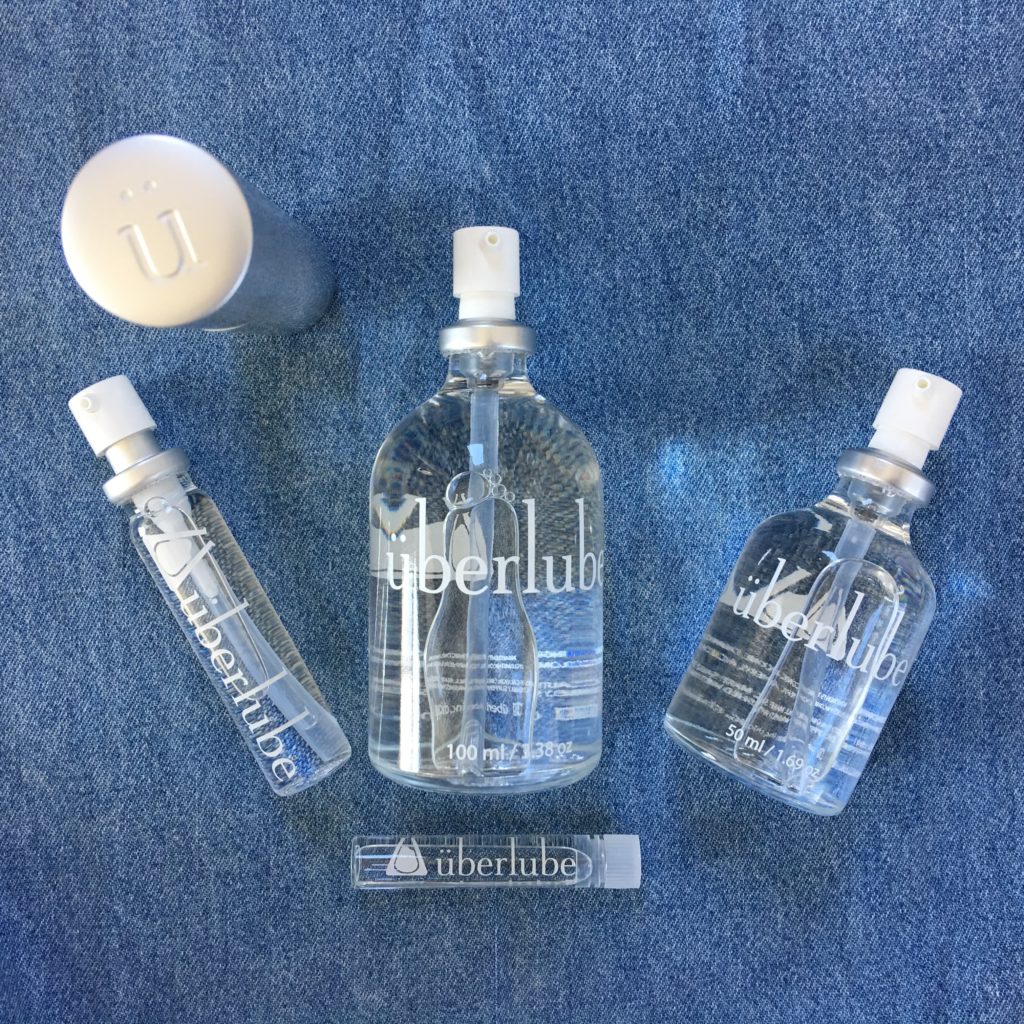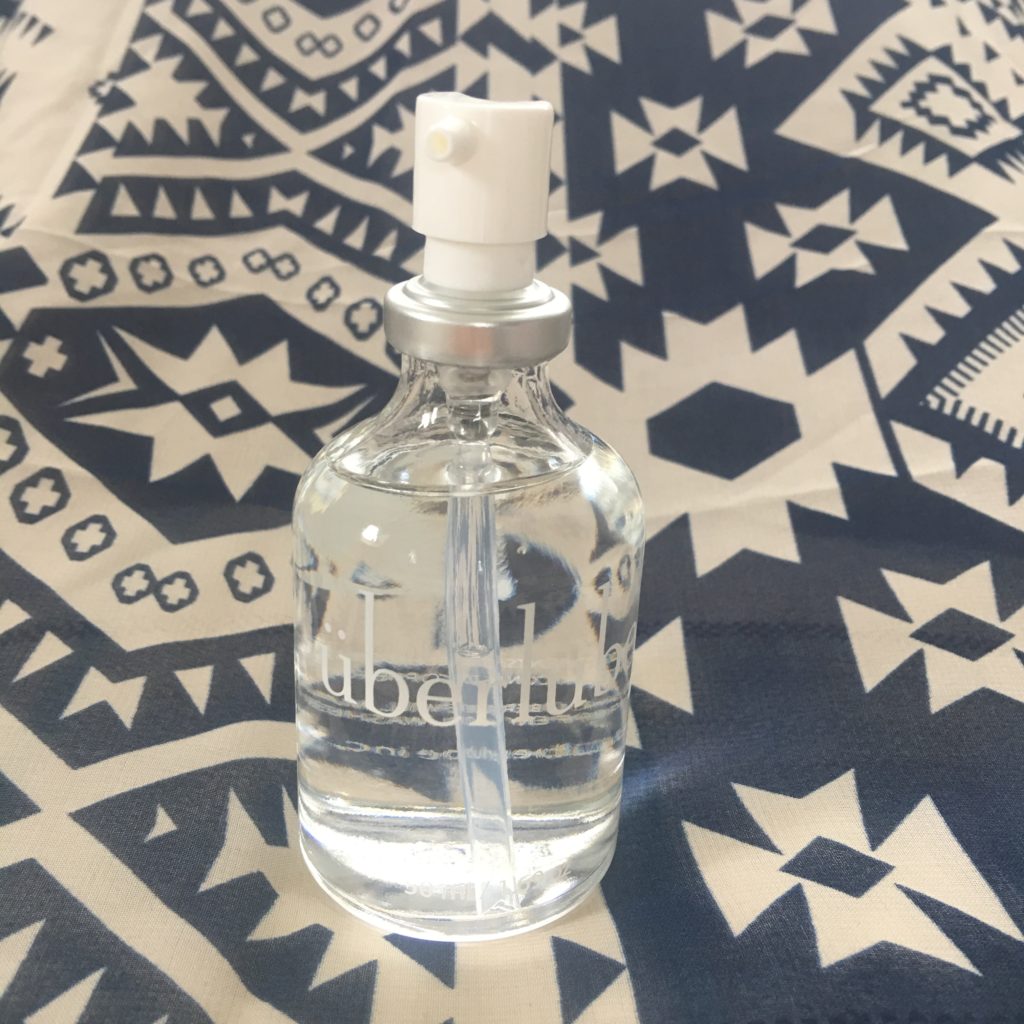The first time I tried having penetrative sex…
I didn’t use lubricant.
Yep, I know. Big mistake.
It 99% wouldn’t have helped me get my partner’s penis past the WALL that my body put up…

But looking back, I recognize that I could have been better prepared to make my first time having PIV sex more likely to be ‘successful’.

My mission is to help you avoid the MANY challenges I encountered in my life and AVOID the mistakes I made while trying to overcome vaginismus.
So here is one!
In your journey of putting vaginismus in your past, lubricant is your BEST friend.
And with dilating in particular…
It’s highly recommended to put a liberal amount of lube on the dilator before you attempt to insert it.
And keep in mind…
An effective, pain-free dilating involves multiple steps before you attempt insertion.
What kind of lubricant should you use?
Right off the bat, if you’re using silicone dilators (the material I most highly recommend for this reason), you MUST use a water-based lubricant.
Silicone-based or hybrid (water/silicone mix) lubricants should NOT be used with silicone toys!
Because the silicone-based lube can degrade and/or discolour them.

So you’re working with silicone dilators, you might think…. “Alright, let’s keep it simple and 100% stick to water-based lubricant.”
Let’s see what you would be missing out on!
Why try silicone-based lubricant?
Unlike water-based lubricant, silicone-based lubricants do not dry up in the air, absorb into the skin, or absorb into the blood stream.
They stay slippery for MUCH longer than water-based lubricants!

Apparently they even work under water, making them great for fun in pools, lakes, and tubs. (I haven’t tried this though.)
Even though silicone-based lubricants are NOT compatible with silicone toys, they’re perfect for plastic or glass toys as well as skin-to-skin play (so important before and during the dilating process)!
Silicone-based lubricants, are also latex-compatible, so it’s safe and effective to use with most condoms. Specifically Überlube, my favourite silicone lubricant to date, is compatible with natural rubber latex and polyisoprene condoms, but not with polyurethane condoms.
But with all the choices out there on the market…

What exactly do you look for?
In this blog post, I dove deep into the details of the 2 MOST important factors to consider when you’re shopping for lubricants – osmolality and pH.
For silicone lubricants (anhydrous meaning without water), osmolality isn’t relevant. Osmolality measures the concentration of dissolved particles per unit of water.

On the other hand, pH level is a measure of acidity and alkalinity in a water-based environment.
A healthy vaginal pH level is between 3.8 – 4.6 (pH can range up to 5.5 without necessarily being unhealthy).
So you need a lubricant with a pH in THIS range!
Using a lubricant with a pH below or above a normal vaginal pH will reduce the natural level of acidity in the vagina. This damages the beneficial bacteria that fends off infections and thus increases the risk of infection!
ÜberLube has a pH of 4.6, within the range of a healthy vaginal pH.
Score!
I tried it and here is more of what I have to report…
Sensation
I noticed it stayed slippery for the longest time period than any other lubricant I’ve tried to date.
So you’re interested in something more long-lasting that needs to be reapplied less often, this is it!
AND it DOESN’T leave a sticky residue!
I also liked that it didn’t have any sort of chemical-y smell.
I’m not typically physically sensitive to lubricants, and ÜberLube didn’t cause me any irritation either.


Packaging
Überlube’s stylish glass bottle definitely has a unique look!
But is it practical?
Its measured pumps allow you to dispense the perfect amount of product every time (yep, even in the dark)!
It cleans up easily, making it look like new…
BUT it’s also heavier than other lubricant bottles. So don’t ‘gently’ fling it to the side of the bed as you might be used to during intimacy.
It WILL bounce off, speaking from experience.
Ingredients

Überlube is made of silicone with a trace of vitamin E to improve the finish and leave a smooth sensation.
Here are all of its ingredients:
- Dimethicone
- Dimethiconol
- Cyclomethicone
- Tocopheryl Acetate (Vitamin E)
It does NOT contain alcohol, gluten, glycerin, parabens, scents, or flavors.
It’s cruelty free, containing no animal products, and is vegan friendly.
Other uses
There are actually a ton of other potential uses for Überlube.
Here are a few great ones! 👇
- Use it while swimming to protect skin and hair from chlorine and bromine…
- Use Überlube after shaving to reduce razor burn and keep skin soft and smooth...
- Prevent chafing – just apply a small amount on that area of skin.
- Apply it to your tattoo to condition the skin and bring out the ink’s colour…
- Apply it before blow drying your hair for heat protection, or after styling for a protective, frizz-free finish.
Price
Silicone lubricants are in the higher-priced range when compared to the water-based category of lubricants for example.
ÜberLube retails for $18 for a 50mL bottle, which is very much comparable to other silicone lubricants!
For its long-lasting nature, I’d say it’s very much worth it.
You can ALSO get it at MedAmour (use discount code KATRINWITHLOVE for $10 off any order of $50 or more and free shipping on orders over $55).
So, have you noticed the difference between water-based and silicone lubricants, in your experience?
To your smooth and sexy experiences!
– Katrin, with Love



